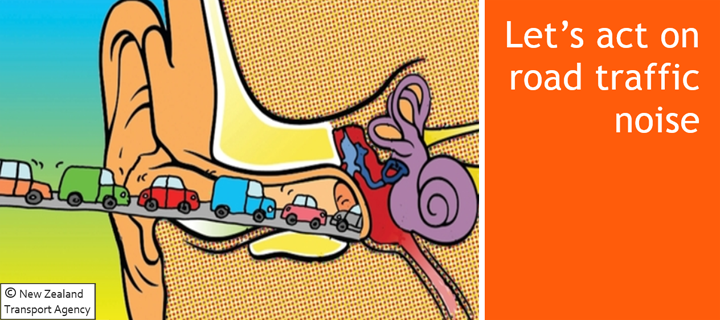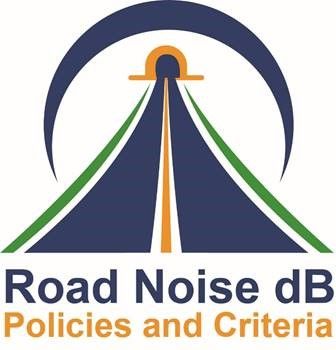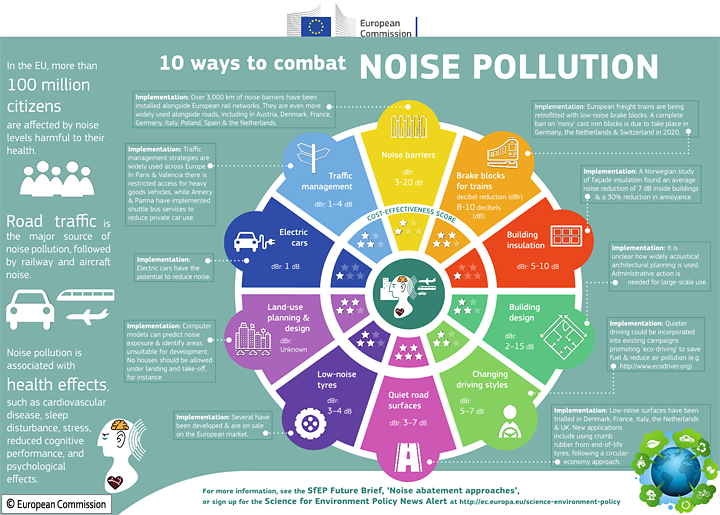Let's act on road traffic noise!
Currently, close to half of all Europeans are regularly exposed to traffic noise levels that are potentially dangerous to health.
- How does traffic noise affect lives?
- How many people are exposed to traffic noise?
- What will the traffic sound like where I live?
- What role do road agencies have in reducing road traffic noise?
- 10 ways to combat noise pollution

How does traffic noise affect lives?
According to the World Health Organization, traffic noise is associated with sleep problems, tiredness, headaches, high blood pressure, hormonal effects, stress and increased risk of heart disease. A recent Danish study has also indicated that approximately 5 percent of strokes may be attributable to the effects of traffic noise. It is this long-term impact on heart disease that leads to premature death.
In addition, indications also show that children exposed to constant environmental noise are at risk of developing learning difficulties.
The economic impact of traffic noise is now comparable to that of road death and trauma.
How many people are exposed to traffic noise?

Although exposure to road noise is now understood to result in serious effects on health, there is limited information regarding the total number of people impacted.
Based on studies undertaken within Europe, it is estimated that every year, thousands of people are thought to suffer an early death because of exposure to traffic noise. In Europe, more than 100 million citizens are affected by noise levels harmful to their health.
Further work is required to estimate the impact of traffic noise on all member states and National Committees are encouraged to undertake mapping of traffic noise exposure to provide a more informed understanding of the social and economic costs country by country.
What will the traffic sound like where I live?
Communicating the impact of traffic noise to the community and other stakeholders has traditionally been difficult.To help in this exercise, the Road Directorate in Denmark has developed a series of audio files (Click here to listen auralisations) that will help you hear the effect of noise barriers and noise reducing road surfaces. You can also hear the influence of wind direction, wind speed and other parameters.
Two scenarios are presented:
- Two Lane Highway: The road has a yearly average of approximately 15,000 vehicles at 80-90 km/h (10% heavy vehicles).
- Four lane highway: The road has a yearly average of approximately 59,000 vehicles at 110 km/h (10% heavy vehicles).
Auralisations are made for positions 30 metres and 100 metres away from the roadside. Wind speed is 0 m/s (neutral wind) unless noted otherwise and cover the day, evening and night periods.
Different effects are demonstrated including:
1 |
Motorway with and without noise reduction measures showing the noise reduction of a noise barrier (4 metres high) and a noise reducing surface. |
2 |
Motorway noise compared to highway noise. |
3 |
How do noise levels fluctuate during day, evening and nighttime? |
4 |
Changes of 3, 6 and 10 dB - what does it sound like to have noise reduction at these different levels? |
5 |
Vegetation – sometimes vegetation along the roadside may work as noise reduction, however, the vegetation has to be forest-like, broad and very densely grown belt of vegetation – otherwise the physical noise reduction is close to zero. |
6 |
How wind speed and direction influences road noise? |
7 |
Influence of terrain and distance - noise is normally reduced with increasing distance, but the actual noise reduction depends on the acoustical properties of the terrain. |
8 |
Road surface age – the type, condition and age of the surface may influence the road noise significantly. |
The auralisations are not intended to be "absolute" but as presented they will provide sufficient guidance as to the relative effects of distance, speed, pavement and maintenance.
What role do road agencies have in reducing road traffic noise?
- Road Agencies need to work with Planning Authorities to minimize the impact of traffic noise on the community through compatible zoning interfaces and by appropriate urban and site design that locates noise sensitive land uses such as homes and schools well away from busy roads.
- Road Agencies can increase the buffer area between the road and the community. Increasing the distance from the road from 20m to 100m can reduce noise by up to 7 dB.
- Designing road projects to increase the ability of the intervening ground to absorb sound, constructing earth mounds, having loose soil and protective vegetation can scatter the sound waves and absorb the noise levels.
- Design the road to minimize the road gradient or design new roads in cuttings or tunnels.
- Design the pavements to include quieter low noise pavements.
- Utilize ITS technologies to smooth traffic flows to avoid noise of constant starting and braking.
- Maintain road in good working order to minimize noise due to potholes, loose service covers, raveling of asphalt or uneven seal and expansion joints.
- Work with regulators to support mandatory use of low noise tyres.
- Install noise barriers and/or upgrading of homes to limit noise transmission - provide "silent" façades.
- Work with building regulators to improve existing housing stock near noisy roads to block sound transmission and provide "quiet" areas particularly for sleeping; and to require new housing stock to be designed such that the building fabric reduces noise entry and building layout is such that noise sensitive areas are located away from the road.
Global road noise policies and criteria database
The Global Road Noise Policies and Criteria Database was established by Technical Committee E2. It contains the most comprehensive listing of road noise policies and criteria available. As an important resource for all road agencies and acoustic specialists, it would benefit from having a complete listing of all PIARC member countries.
If your country or jurisdiction is not listed and you would like it to be included; or provide updated information; or if you simply have any queries on the database, please contact: noise@piarc.org
10 ways to combat noise pollution
The European Commission has published a brief on noise abatement approaches http://ec.europa.eu/environment/integration/research/newsalert/pdf/noise_abatement_approaches_FB17_en.pdf.
This infographic provides a summary of the typical approaches and the estimates of noise abatement relevant to each approach. Whilst the actual abatement achieved and the cost effectiveness of each approach will be dependent on the local circumstances, it provides a useful guide for road agencies.
For more information see: http://ec.europa.eu/environment/noise/


